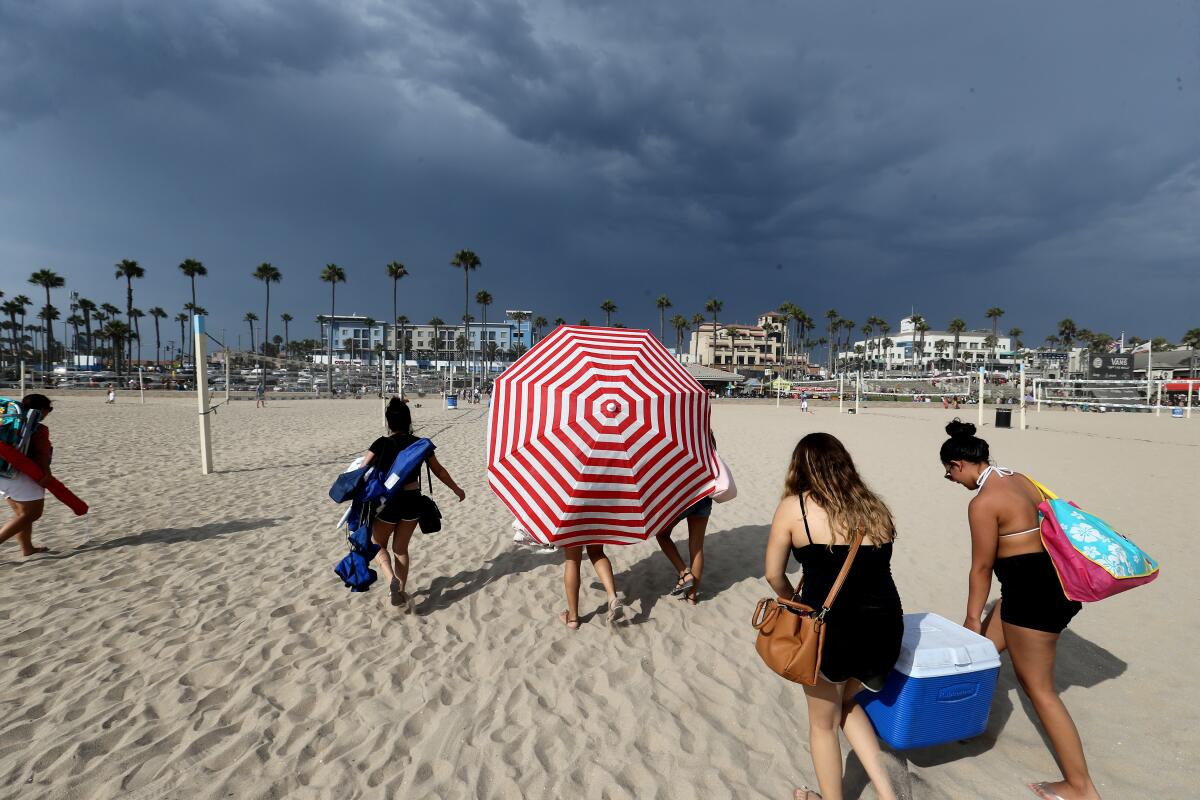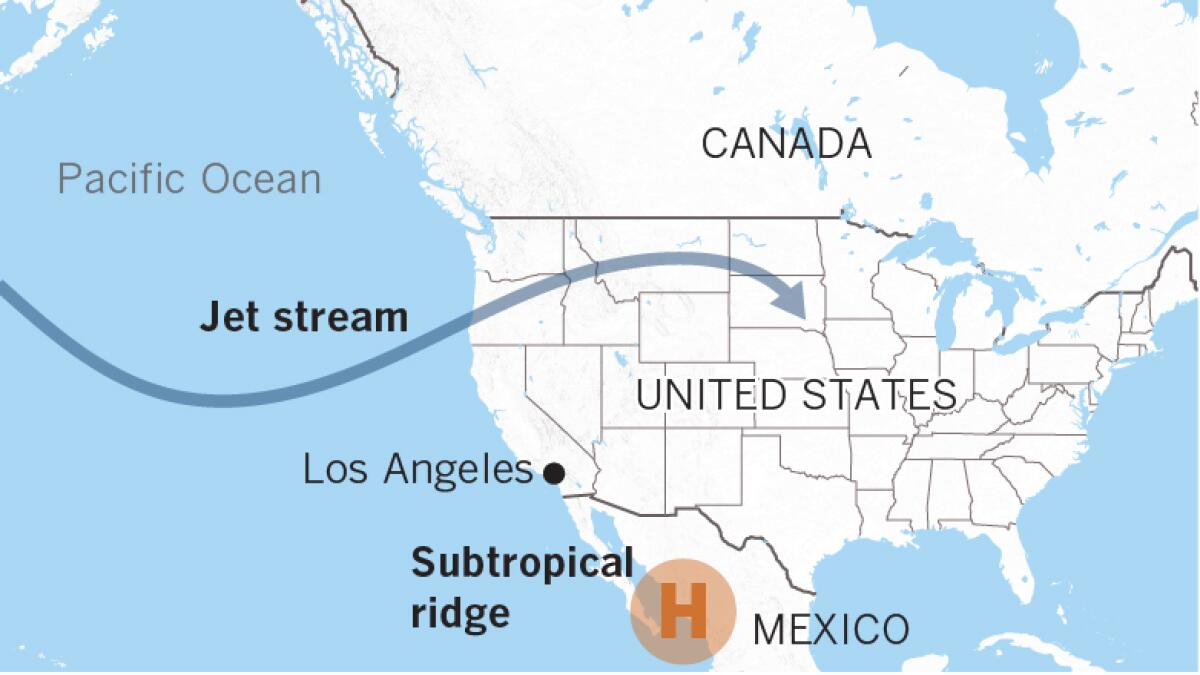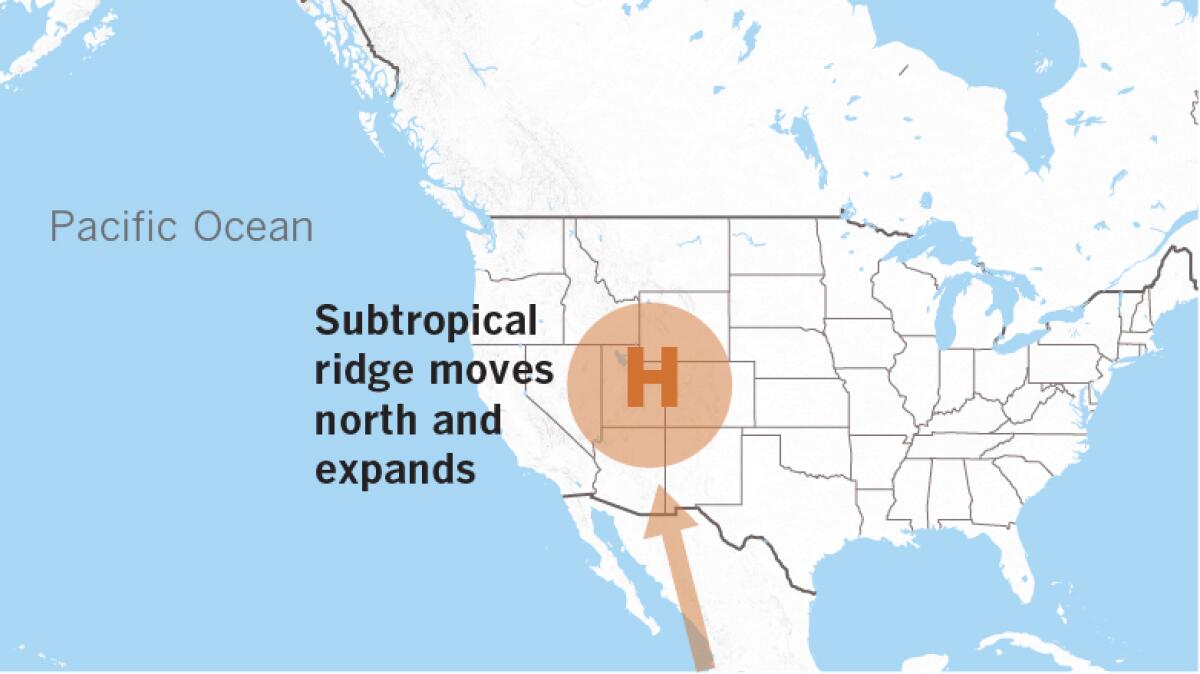Why is L.A. getting so much rain in July? Understanding the summer bumper

- Share via
Anyone who was around here last winter knows that the song got it wrong: It does rain in Southern California. Not only does it rain, but it also can rain in the summer.
This was clear Thursday morning, when a summer storm moved into the L.A. basin. “Be ready for sudden slow downs and slippery roads on your morning commute. Lightning is possible,” the National Weather Service said.
That rain is usually courtesy of the weather pattern known as the North American monsoon, and generally falls in the mountains and deserts. Occasionally, a shower or thunderstorm will peel off the mountains and drift into the Los Angeles Basin, or sometimes make it all the way to the beaches. There may be downpours in the inland mountains and deserts, and dry lightning is a potential hazard in the higher elevations, but rainfall amounts are usually puny near the coast. At the very least, the monsoonal flow gives Los Angeles a sticky, tropical feel, making a dry semidesert uncharacteristically muggy. The subtropical moisture, combined with the heat from a dome of high pressure typically camped over the Southwest, ratchets up the misery level by day and doesn’t back off much at night, making for uncomfortable sleeping weather. Here’s a look at the dynamics of the monsoon:
Late spring and early summer
In June, a subtropical ridge of high pressure is usually aloft over Mexico. High pressure slowly rotates clockwise in the Northern Hemisphere. It is dry and sinks in the atmosphere. As it sinks, it heats up — and the stronger the high pressure, the more it produces heat.

July through September
During the summer months, the high pressure shifts northward and expands dramatically, bringing seasonal heat to the Southwest deserts and parts of Southern California.

Monsoonal moisture
Circulation around the high pressure pulls subtropical or monsoonal moisture up from the Gulf of California and the Gulf of Mexico, increasing humidity in the Southwest.

Summer showers and thunderstorms
Subtropical moisture fuels showers and thunderstorms across the Southwest and into the southern Rockies. In Southern California, the wet weather is mostly confined to the deserts and mountains, and buildups of cumulus clouds over the mountains can often be seen from the coast. Sometimes monsoonal showers and thunderstorms spill over from the mountains into the L.A. Basin. Torrential rain from thunderstorms can cause flash flooding, and dry lightning strikes can spark wildfires.

Reporting and graphics by Paul Duginski
Sources: Bill Patzert, retired climatologist, Jet Propulsion Laboratory; National Weather Service Los Angeles/Oxnard; Times reporting
More to Read
Sign up for Essential California
The most important California stories and recommendations in your inbox every morning.
You may occasionally receive promotional content from the Los Angeles Times.









